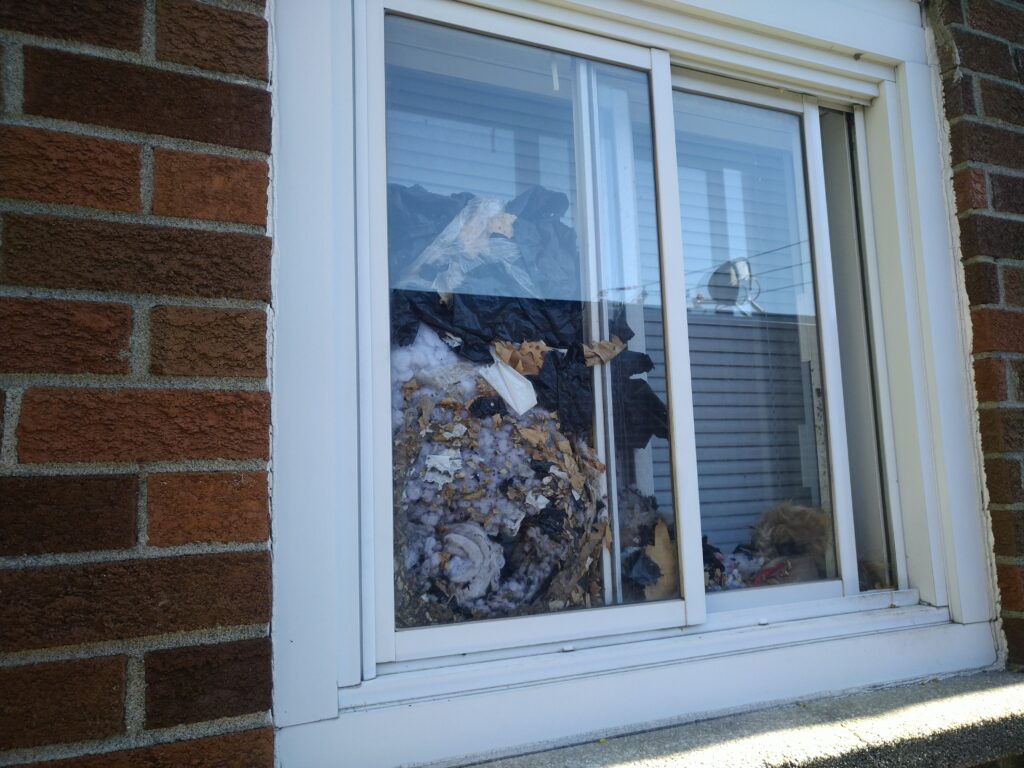Though there are 289 species of squirrels in the world, and of those, 65 live in the United States. Most people equate the name squirrel with the fluffy-tailed, pointy-eared, acorn-eating critter that scurries up trees and across electric wires. Believe it or not, these squirrels make up the minority of squirrel species in this country. There are 10 tree-dwelling species, including two types of flying squirrel. Both flying squirrels and three other tree squirrels call Wisconsin home.
The natural nesting habitat for all five critters is up in the trees, but they occasionally find a way into an attic. If you suspect you have a squirrel in your house, contact professionals for humane squirrel removal for help. Squirrels and birds both build nests, and they are often approximately the same size — depending on the species of each that created them — so, where do squirrels build their nests, and how do you know it’s a squirrel’s nest you’re looking at?
Out on a Limb
Flying squirrels prefer to nest in ready-made beds, from woodpecker holes and tree snags to the abandoned nests of other squirrels and birds. The other three tree species in Wisconsin build nests. Most of the time, they prefer the safety of a tree cavity, which offers protection from the elements and potential predators.
The tree cavities that offer the best environment are big enough inside to allow them to construct a comfortable nest but have openings that are no more than eight inches in diameter, making it more difficult for their predators to get inside. However, sometimes they select a tree branch situated sufficiently high off the ground — typically at least 60 feet — and build their nest out on the limb.
Under Cover
Even though a squirrel may opt to construct a place to sleep on a branch, it still prefers the safety of cover. Though they can sleep in just about any sort of tree, as long as it offers branches sturdy enough to hold their nest and enough leaves to give them a safe place to hide, squirrels prefer the generally dense cover of conifer trees. Most conifers keep their needles all year long, so a squirrel doesn’t have to worry about exposure when autumn hits.
A squirrel’s nest is constructed for comfort and protection. It weaves together grasses, twigs, feathers, fur, and bark into a one-foot-wide home. They are rounded and soft and can look like they were haphazardly thrown together. Some squirrels construct mansion nests that can be as large as a basketball. You may also spot human-made items woven in the nest as well, such as nylon string or pieces of fabric.

Inside Scoop
Even though some birds build rather large nests, you should be able to distinguish a bird’s nest from a squirrel’s nest pretty easily. Where birds’ nests are made from more sticks than other materials, squirrels’ nests are made from more of the softer materials, such as grasses and leaves. Birds’ nests are usually tightly woven and neat, while squirrels’ nests are messier. Birds create a bowl in their nests for holding eggs. There is no inside scoop in a squirrel’s nest.
Female squirrels do not create nests for laying eggs, but they do raise their little ones in them. A mama squirrel typically has multiple nest sites near the nest she considers her primary home. She uses these other nests as safety zones, moving her young to different locations when she senses her little family is not safe. All squirrels use their nests as shelter and a place to hang out and rest. Some species, such as the gray squirrel, may share nests among themselves or have communal spaces where they can chill together.
Humane Wildlife Control in Madison
When you see a squirrel’s nest in a tree in your yard, enjoy the sight and any squirrel activity you observe. If you find one in your attic, contact Skedaddle for humane squirrel removal in Madison.




